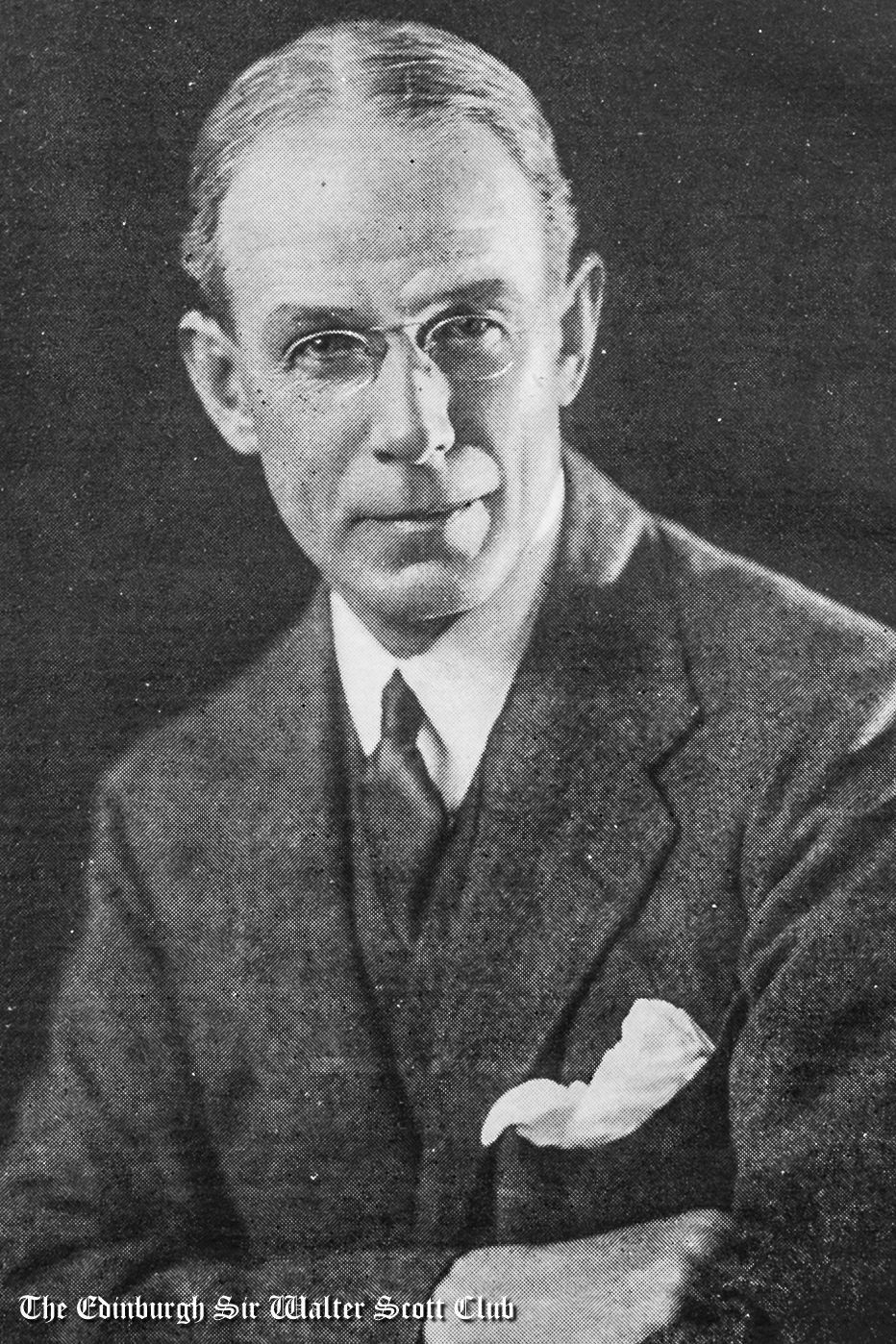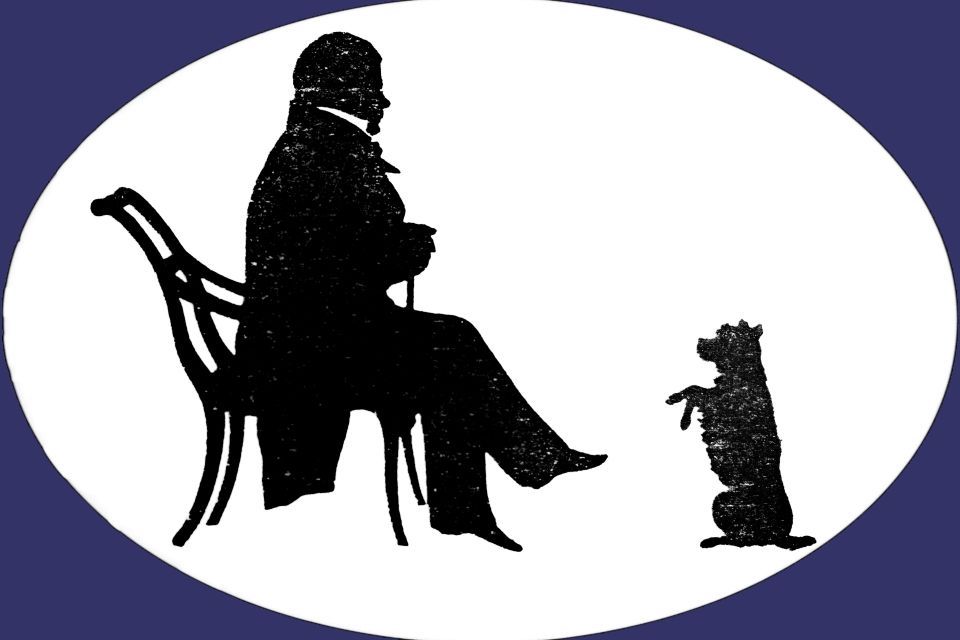1921
Our President in 1921 was:
The Right Hon. Robert Munro KC MP.
The Very Reverend Professor Paterson presided and delivered the Toast to Sir Walter at the 22nd Annual Dinner on Saturday 17th December 1921 in The North British Station Hotel, Edinburgh.
Download the [transcript] or read the [bulletin]
Summary of the Speech:
Professor Paterson opened by acknowledging the challenge of doing justice to Scott’s legacy. As a fellow Scotsman and a scholar teaching on the very site of Scott’s birthplace, he drew on a deep personal and national connection.
He framed Scott’s greatness within the broader context of the Scottish national character and landscape. Rather than glorifying Scott alone, Paterson argued that Scott was a product of Scotland’s unique history, culture, and natural beauty. His theme—Scott and Scotland—was developed under several key headings:
Main Themes:
1. The Goodly Land
Scotland’s landscape—from Highland grandeur to Lowland richness—offered Scott vivid settings and emotional resonance. The variety and drama of its geography made it “a meet nurse for a poetic child.”
2. The Notable History
Scotland’s complex racial and cultural history made it an ideal subject for Scott’s historical fiction. Paterson outlined four dimensions of this:
- Unity after Variety: The Scottish identity emerged from the fusion of many races and influences (Celtic, Norse, Anglo-Saxon).
- Scottish Nationality: Scott helped revive and protect Scottish identity through his literature and political writing (e.g., Tales of a Grandfather, the Malachi Malagrowther letters).
- Power of Scottish Religion: Scott respected the moral force of religion in shaping Scottish character, even if he was critical of extremism. He valued the moderating virtues of sober, devout Christians.
- Trend toward Democracy: Though Scott was personally opposed to democratic reform, fearing mob rule, he appreciated the moral foundations of the Scottish people and their institutions.
3. The Scottish Character
Paterson described the Scottish character as rich in contradictions: practical yet idealistic, dogmatic yet sceptical, humorous yet dour. He celebrated Scott’s ability to portray this complexity, creating a vast gallery of characters (2766 in total!) that brought the nation’s spirit to life.
On the Professions:
Scott was best at portraying the legal profession, thanks to his background. His novels often revolve around legal dilemmas (e.g. Guy Mannering, The Antiquary, The Heart of Midlothian).
- The clergy is represented more cautiously and without heroes; Scott disliked extremes of religious zeal or dereliction.
- The medical profession is underrepresented, though Dr Gideon Gray of The Surgeon's Daughter is a notable exception.
- Teachers, especially university professors, were oddly neglected—possibly due to Scott’s aristocratic bias, Paterson suggested.
The Ideal Scot: Quentin Durward
Paterson concluded by praising Quentin Durward as Scott’s best portrayal of an ideal young Scotsman: brave, loyal, clever, religious, modest, and self-controlled—a paragon of national virtues.
He hoped that future generations would continue to hold such ideals dear.
Interesting Points Worth Highlighting:
- Historical Depth: Paterson’s address is not merely literary but anthropological, theological, and philosophical in scope.
- National Identity: The theme of Scotland’s composite identity and Scott’s role in shaping national consciousness is central.
- Cultural Critique: Paterson gently critiques Scott’s elitism, particularly in his avoidance of democratic enthusiasm and professional teachers.
- Lasting Impact: Scott’s influence on perceptions of Scottish history, character, and landscape is portrayed as both foundational and enduring.
Download the [transcript] or read the [bulletin]
List of Members Present
On Saturday, 17th December 1921, the Annual Dinner of the Club was held in the North British Station Hotel. The Very Rev. Professor Paterson, D.D., presided over a company numbering about 160. The croupiers were Mr R. Gemmell Hutchison, R.S.A., and Mr William Thomson, W.S. Among those present were—The Lord Provost and Mrs Hutchison; Bishop Walpole, Edinburgh; Admiral Sir Herbert L. Heath; The Dean of Faculty, K.C.; Mr Hugh Walpole; Mr John G. Jameson, M.P.; Sir Robert B. Greig; Sir Hugh Arthur Rose; Sir David Paulin; Sir Joseph and Lady Dobbie; Sir Richard Mackie; Rev. Dr Fisher; Mr A. Grierson, Town Clerk; Dr MacLean Watt; Dr D. F. Lowe; Dr John Harrison; Dr Alexander Darling; Councillor R. C. Buchanan; Mr Charles J. G. Paterson; Mr Charles Carlow; and Mr Kenneth Sanderson, W.S.; along with Mr James Milligan, W.S., Honorary Secretary; and Mr Elliot R. Smail, Honorary Treasurer.

Subsidiary Toasts Summary
- The Imperial Forces
Proposed by Mr J. G. Jameson, M.P. and responded to by Admiral Sir H. L. Heath.
Heath addressed the importance of maintaining relative military strength, not through excessive armament, but through sufficient deterrence. He referenced the Washington Naval Conference and praised the international efforts toward arms limitation, provided national security remained intact. - Literature
Proposed by Mr A. H. B. Constable, K.C., Dean of Faculty.
He emphasised the need for a truly national library, one that would serve the public and preserve Scotland’s literary and cultural heritage. He spoke of the Faculty of Advocates’ Library, noting its immense collection and role in public education, but also its underfunding and urgent need for broader support. - Response by Mr Hugh S. Walpole
Walpole gave a moving account of his personal connection with Sir Walter Scott, sparked by reading Lockhart’s Life of Scott—a transformative moment for him. He revealed he had recently acquired the Abbotsford Correspondence, a collection of 7,000 letters bound by Scott in 23 volumes, and pledged that they would one day return to Scotland. He criticised the modern literary trend of severing ties with the past and defended Scott’s continued relevance. - The City of Edinburgh
Proposed by Sir Robert B. Greig and replied to by Lord Provost Hutchison, this toast celebrated Edinburgh’s civic pride and connection to Scott. - The Chairman
Proposed by Dr Darling, this toast honoured The Very Reverend Professor Paterson for his presiding role. Dr Darling also marked the retirement of Mr Kenneth Sanderson from the role of Honorary Secretary, acknowledging his long-standing service.
Interesting Points Worth Highlighting
- International Context: Admiral Heath's remarks reflect the geopolitical concerns of the day—particularly the hope placed in diplomatic efforts like the Washington Naval Conference to ensure peace through balance, not escalation.
- Cultural Stewardship: The push for a national library, as articulated by Constable, anticipates modern debates around accessibility, preservation, and national cultural memory.
- Literary Legacy and Philanthropy: Walpole’s possession—and intended repatriation—of the Abbotsford Correspondence is especially notable. His gesture was warmly received and underlined both his admiration for Scott and a broader commitment to safeguarding literary heritage.
- Transition in Club Leadership: Dr Darling’s tribute to Kenneth Sanderson marked a changing of the guard and highlighted the role of behind-the-scenes dedication in sustaining the Club’s traditions.
- Artistic Touches: The Menu Card, designed by artist James Hay, featured a portrait of the Club President—underscoring the ceremonial flair of the occasion.
- Entertainment: Mr Gordon Brown provided musical interludes, maintaining the evening’s celebratory tone.
Download the [Subsidiary Toasts] to read in full.


